This monastery complex dominates a round hill in this region, overlooking farms and the town of Schwäbisch Hall, which is worth a visit as well. Like most monasteries and castles, it includes buildings and structures from different points in history. Today, many of the buildings are used for teacher training. You can wander the grounds for free, and visit the inside of the cathedral for a small fee, as part of a guided tour only. It’s worth noting that ‘Kloster’ means monastery in German, so you will see many signs for ‘Kloster Großcomburg’. Together with Schwäbisch Hall, this makes for a great adventure from Munich or Frankfurt, that will be much less busy than some of the more famous castles and medieval towns in the area.
This post contains affiliate links. Should you click on one, I will get a small commission at no extra cost to you. Thank you for supporting my work!
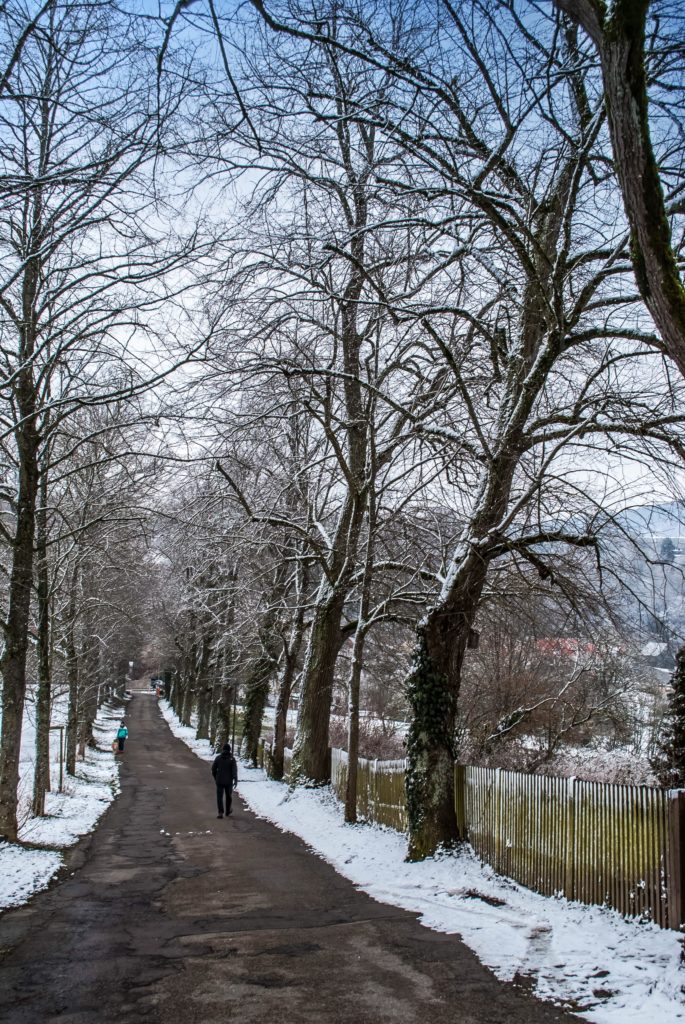
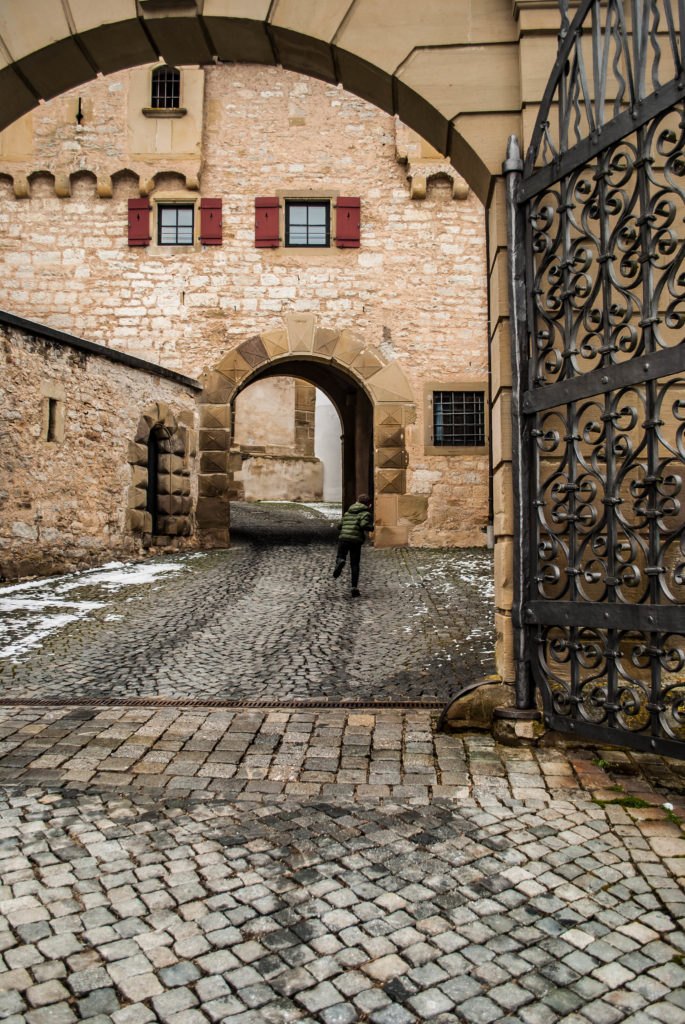
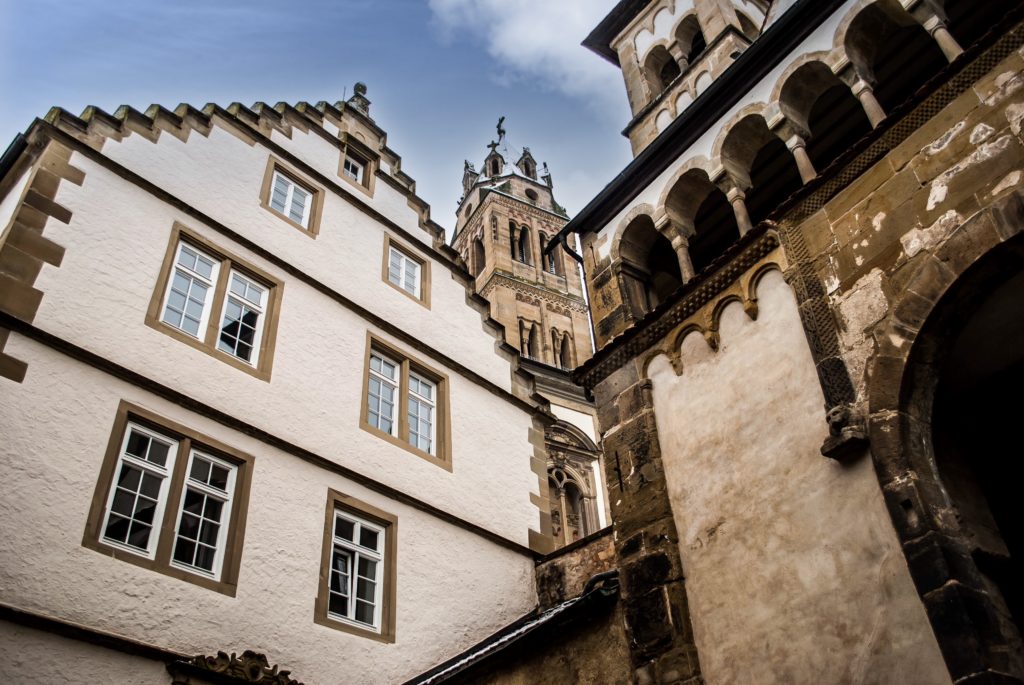
History of the Comburg monastery
This area of Germany was ruled by the Counts of Comburg/Rothenburg (yes, of Rothenburg ob der Tauber fame), and this monastery was originally founded on the ruins of one of their castles in 11th century. It began as a Benedictine monastery, and only admitted monks of noble birth. The monks really stuck to this rule, through a period of Benedictine reform and everything.
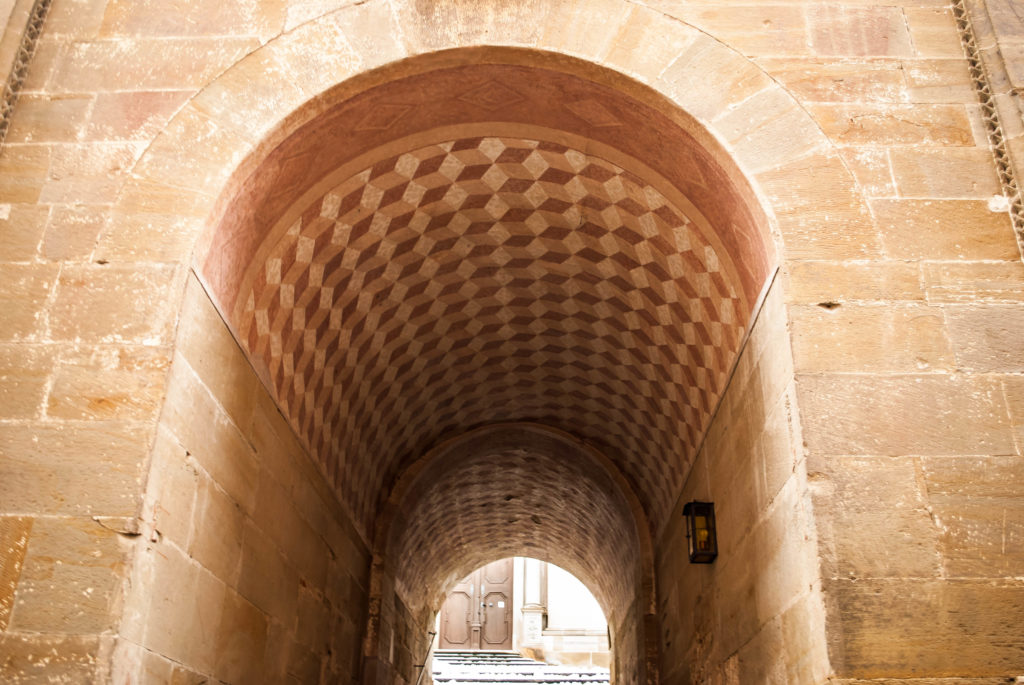
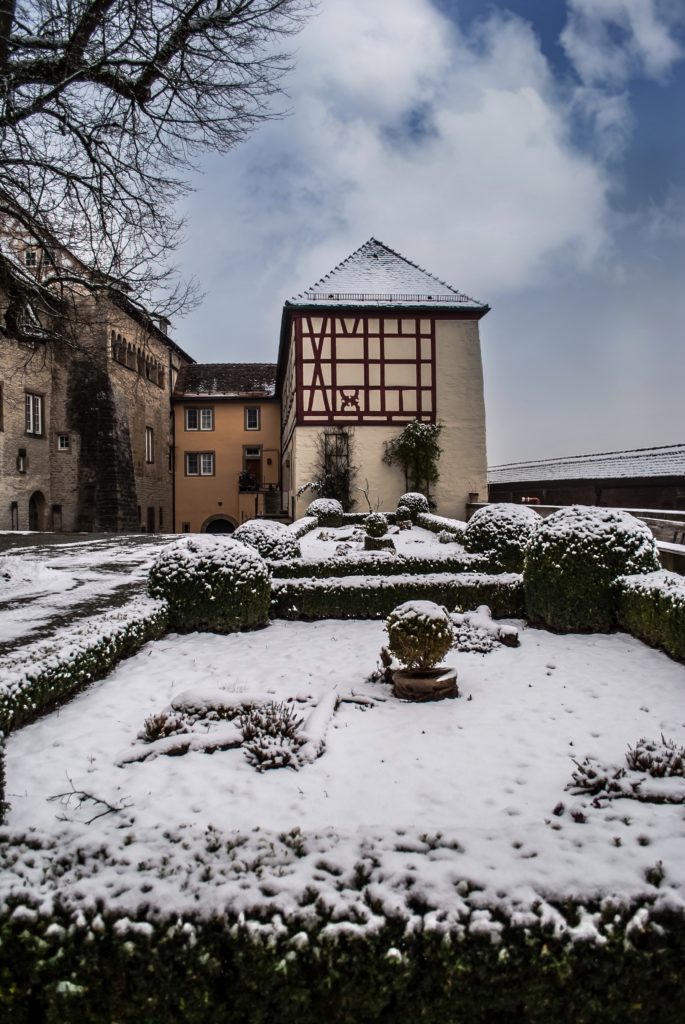
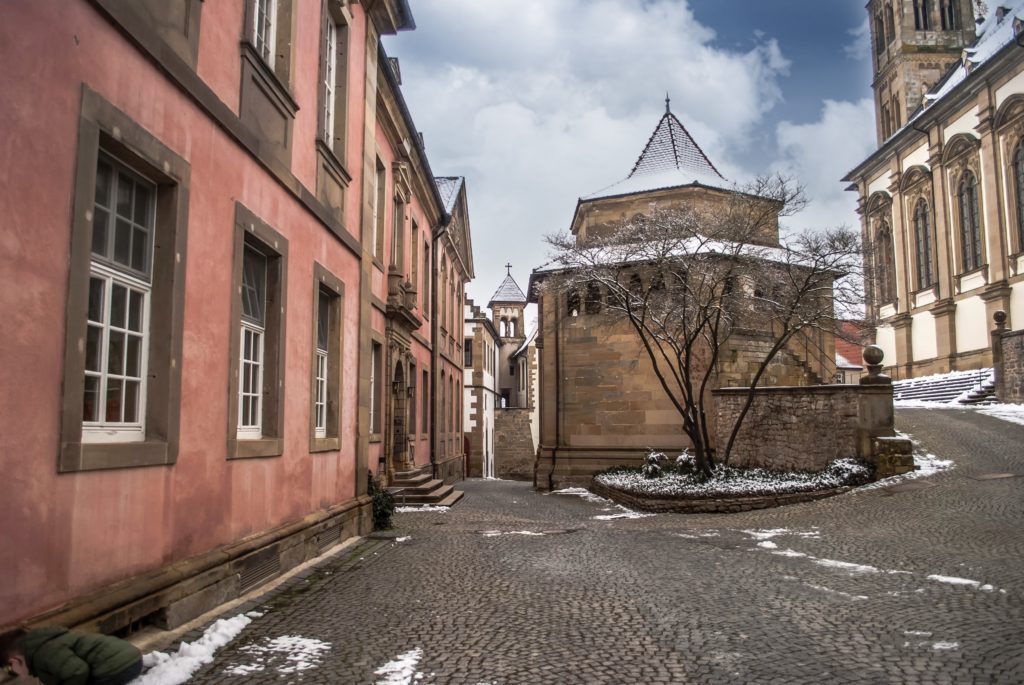
The monastery community went through a few ups and downs. During the Thirty Years War, the Abbey remained undamaged, but passed into the hands of the King of Sweden and then again into a local Duke’s possession.
By the time the second half of the 19th century rolled around, the buildings served as a convalescent home for soldiers no longer able to fight. During the Second World War, it was a headquarters for Hitler Youth and a prisoner of war camp. Now, it is a teacher training college.
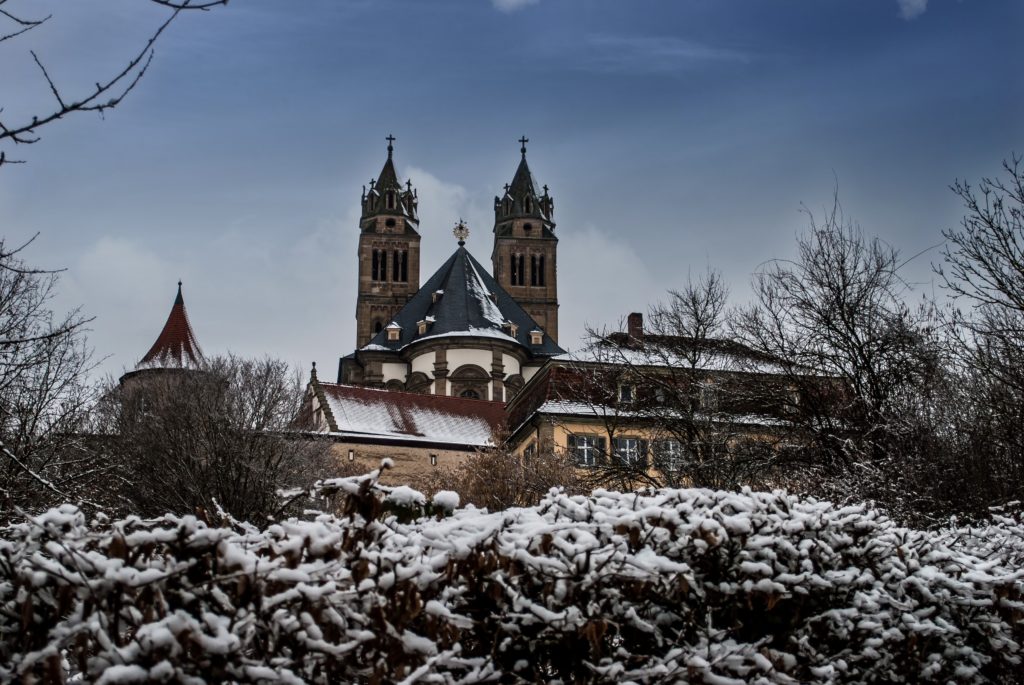
My favourite use of the monastery, however, was as a secondary palace by Paul von Württemberg at the beginning of the 19th century. He was in the middle of an argument with his father about supporting the French during the Napoleonic Wars, and withdrew to Comburg in a bit of a snit. He and his wife lived there for a few years, in the end making up with his father and then spending most of the rest of his life living in Paris.
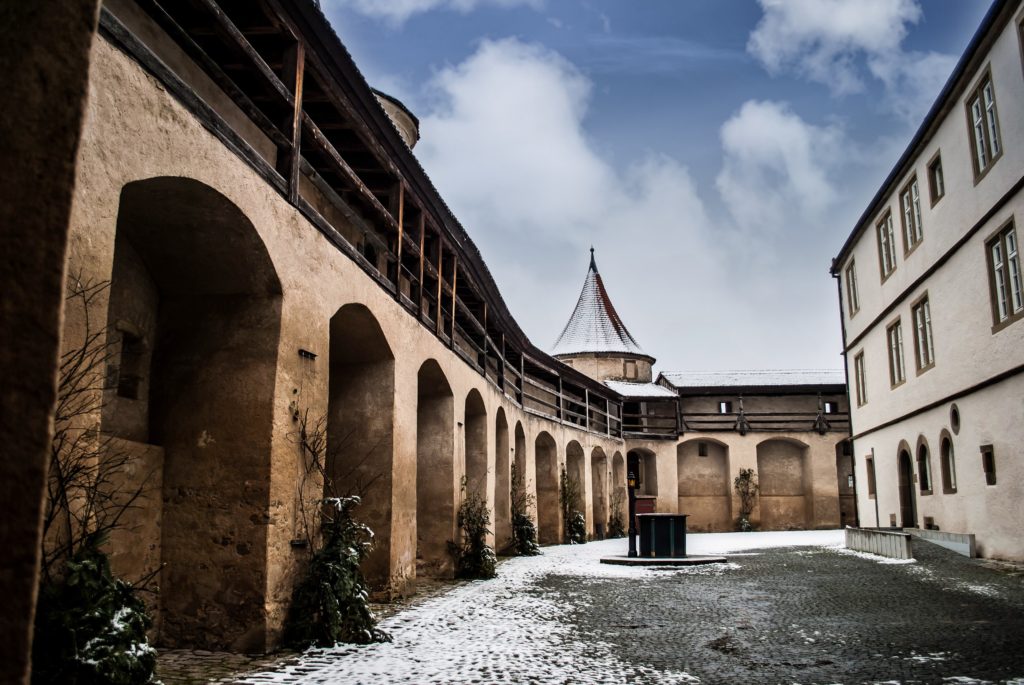
The outer ring wall
One of the first things you encounter on visiting the monastery is the impressive ring wall. It was built in the 1600s. Erasmus Neustetter held various high-ranking positions in the area and monastery, and had this wall built. He had a tempestuous relationship with other church figures, and it seems he spent his later years holed up in Comburg, avoiding conflict. It’s a beautiful spot to hide away, I have to say. Visiting now, you can walk all around the complex along the ring wall, with arrow slits providing little views over the countryside. There is only one way to access the wall however, so once you’re up there, you have to do the full circle or turn back.
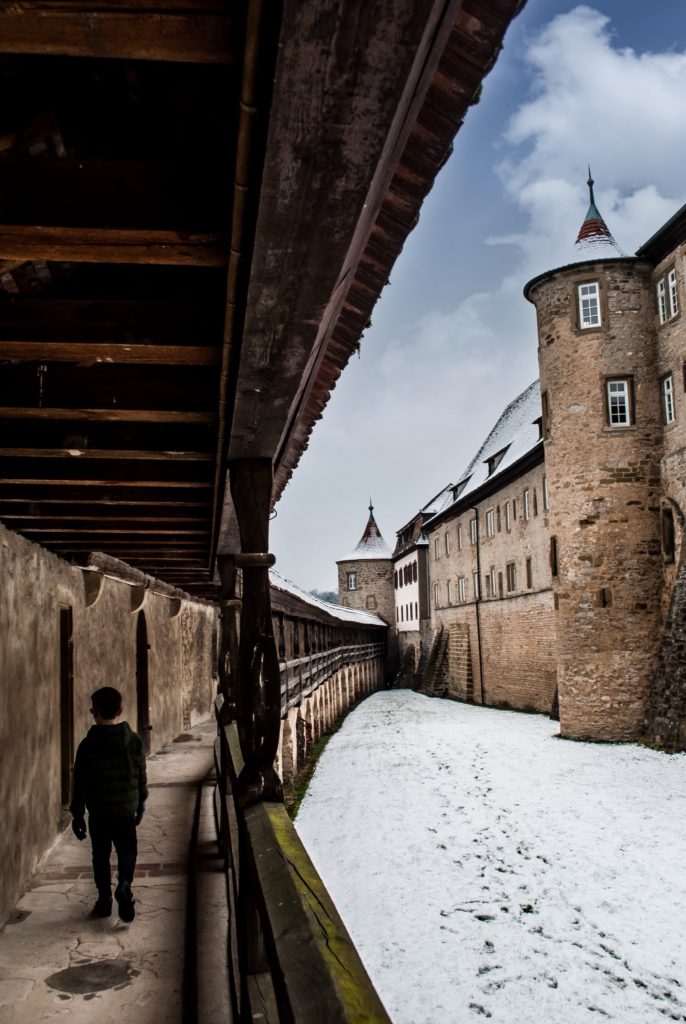
The central church
This is still a functioning Catholic church, and you can attend services on Sundays. If you’d like to see the interior, be sure to check the monastery’s site for times – it can only be viewed on a guided tour. If you miss this, as we did, it’s still a lovely place to see from the outside. We spent about an hour and a half here just wandering around, which has the added benefit of also being free. Inside the church is one of the largest surviving Romanesque chandeliers, a 12th-century gold altar piece, and extensive Baroque organ and interiors to see.
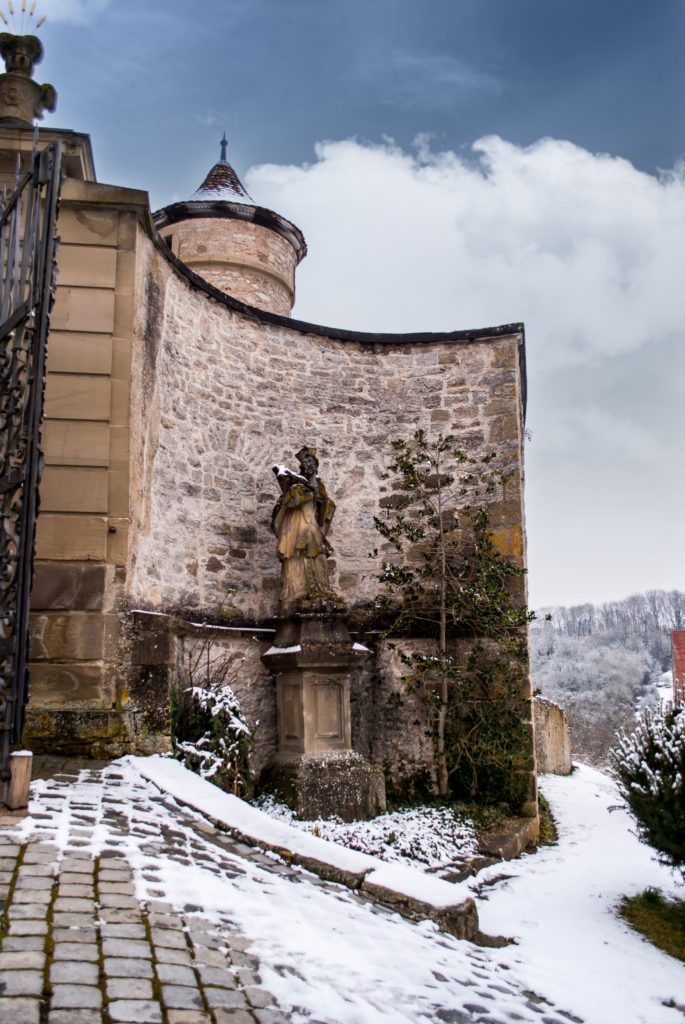
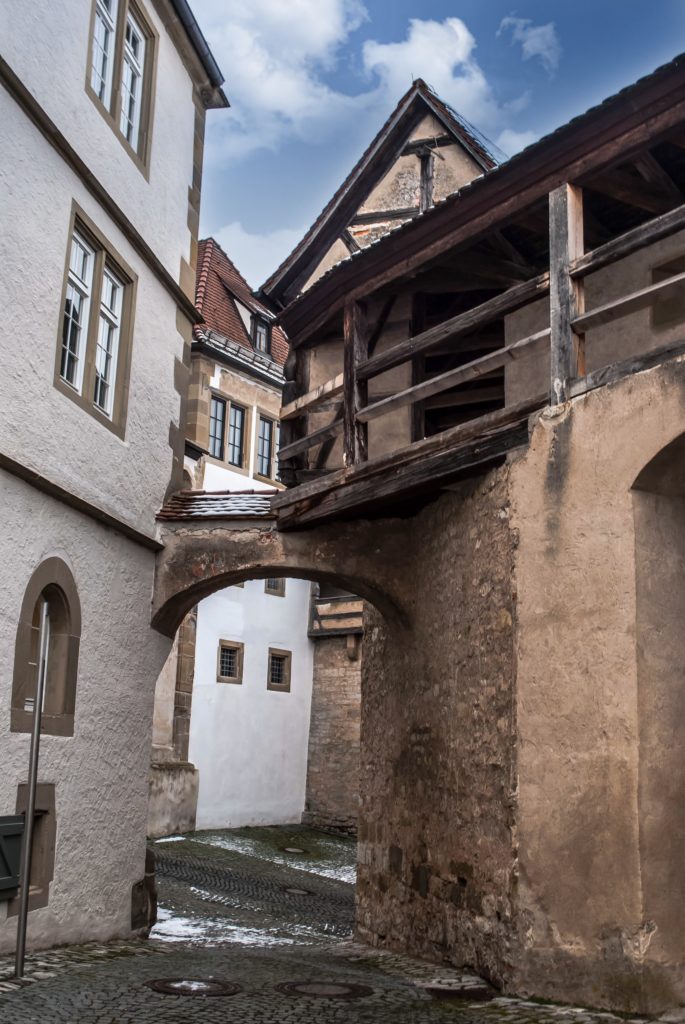
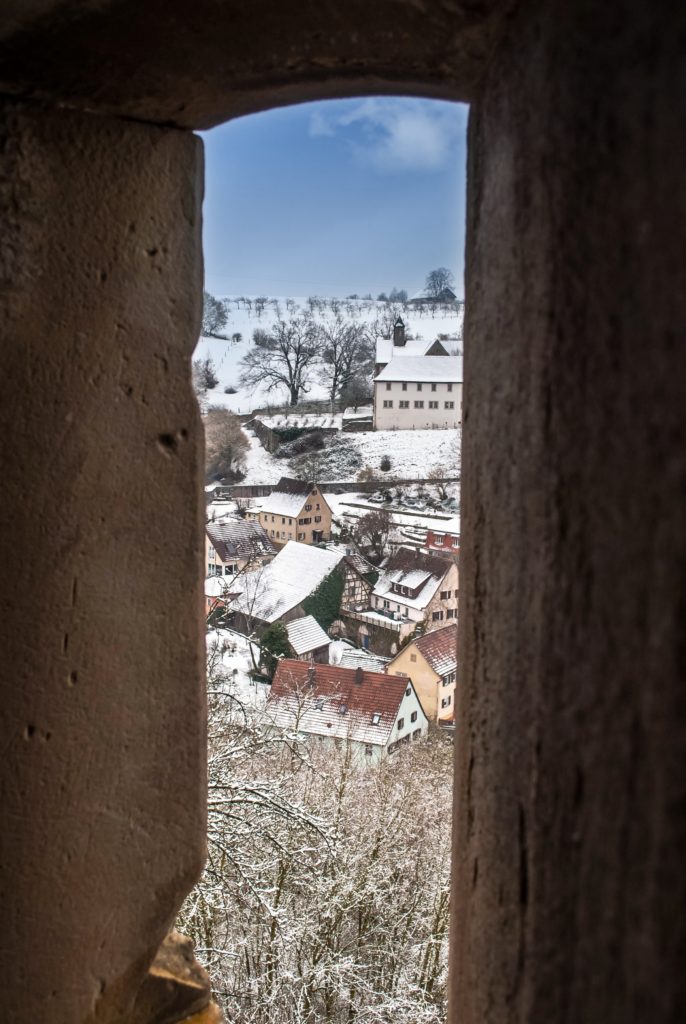
Visiting the Kloster Großcomburg
There is a bus route that will take you from Schwäbisch Hall up to the monastery, or if you choose to drive, there is free parking. There is a very small cafe at the monastery, mostly catering to the students from the training college, so if you visit on a weekend or when the college is closed, you will want to bring your own snacks. If you’re toting a stroller, it’s not too bad in most places, but there are stairs up to the ring wall, and that would be a challenging walk with a buggy. The monastery is definitely worth visiting in conjunction with a trip to Schwäbisch Hall, which I’ve described in more detail here, but it wouldn’t be much more than an afternoon’s entertainment on its own. Like Schwäbisch Hall, you can reach the monastery in about two and a half hours from Frankfurt or Munich. By train, it’s about three hours from either Munich or Frankfurt, involving a change or two of trains as Schwäbisch Hall is on a smaller branch line, and then a bus up to the monastery.
You can book your train right here, in English:
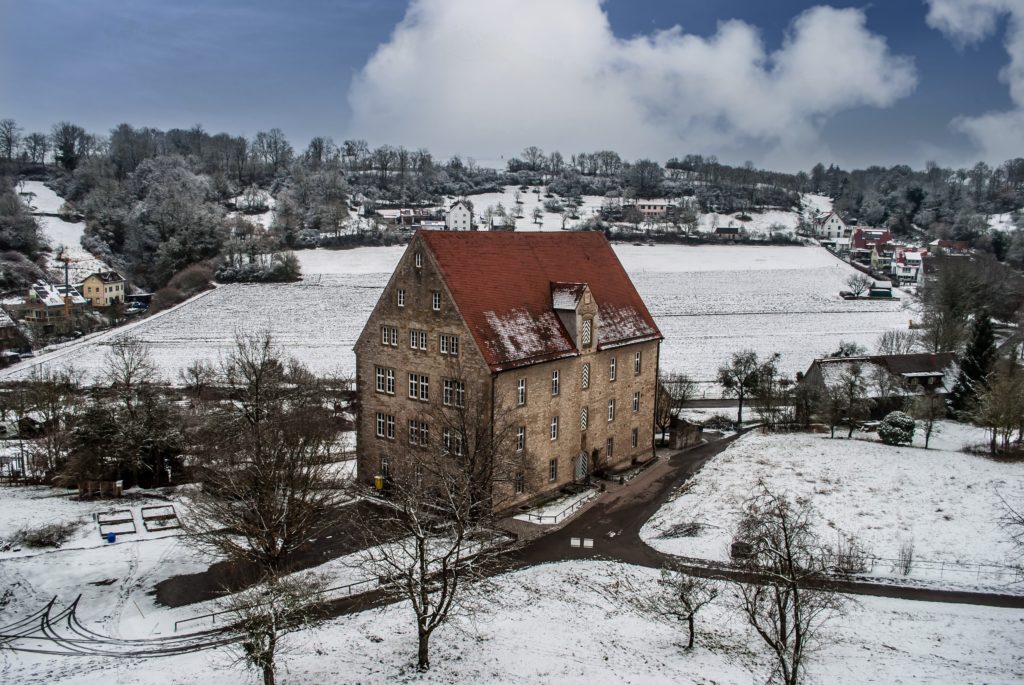

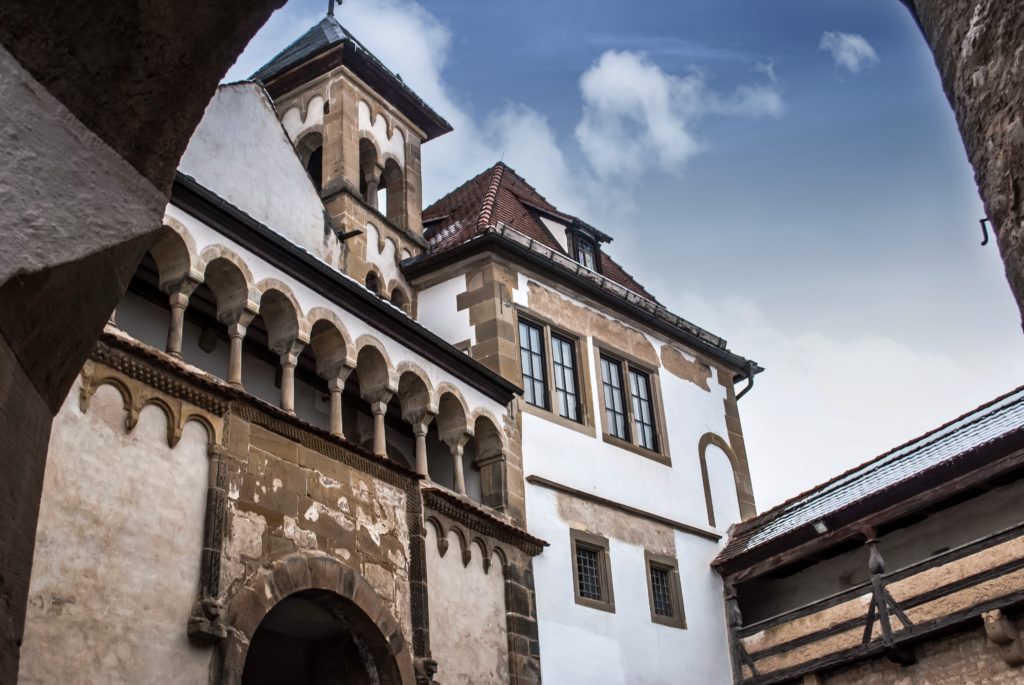
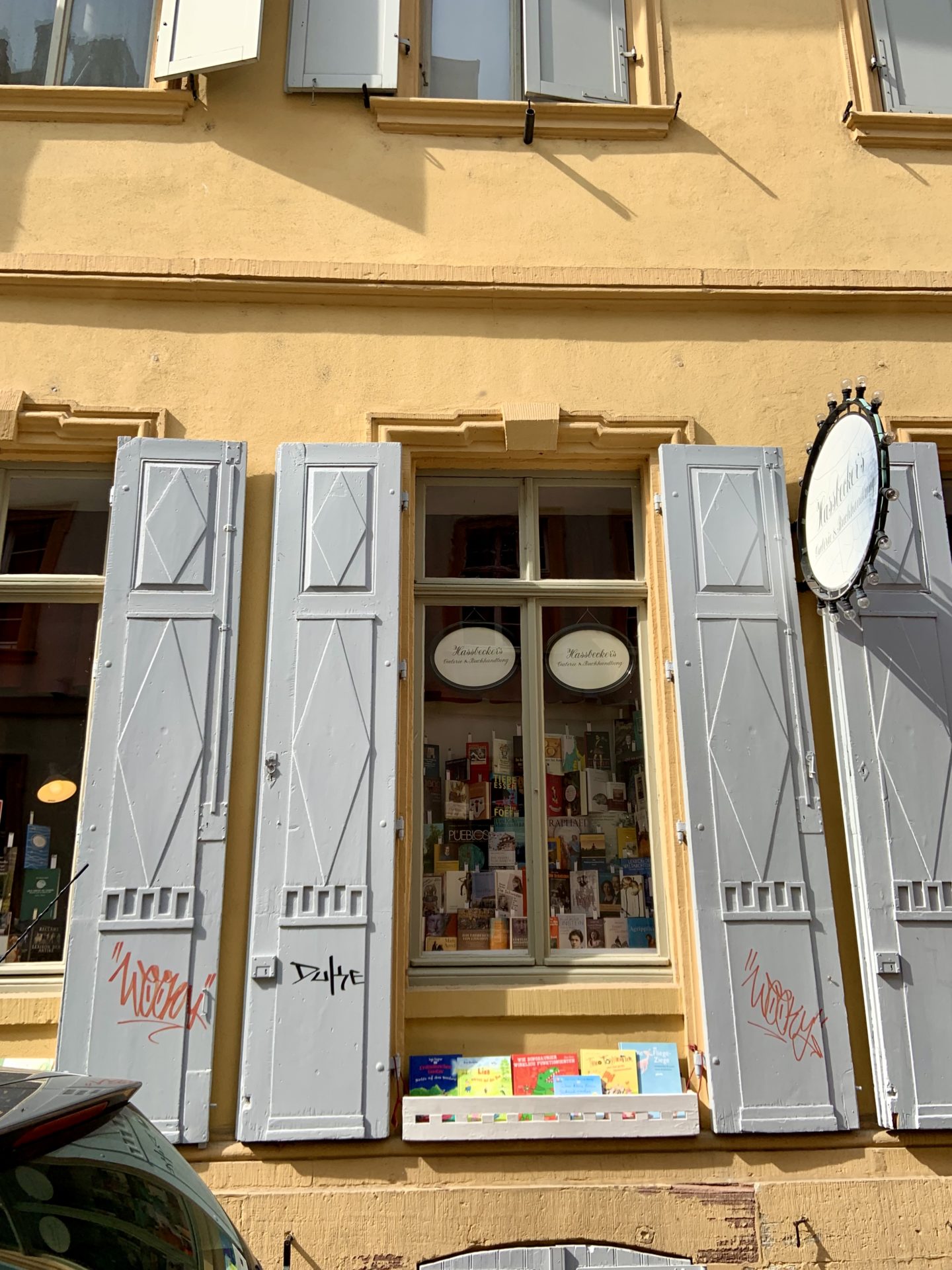
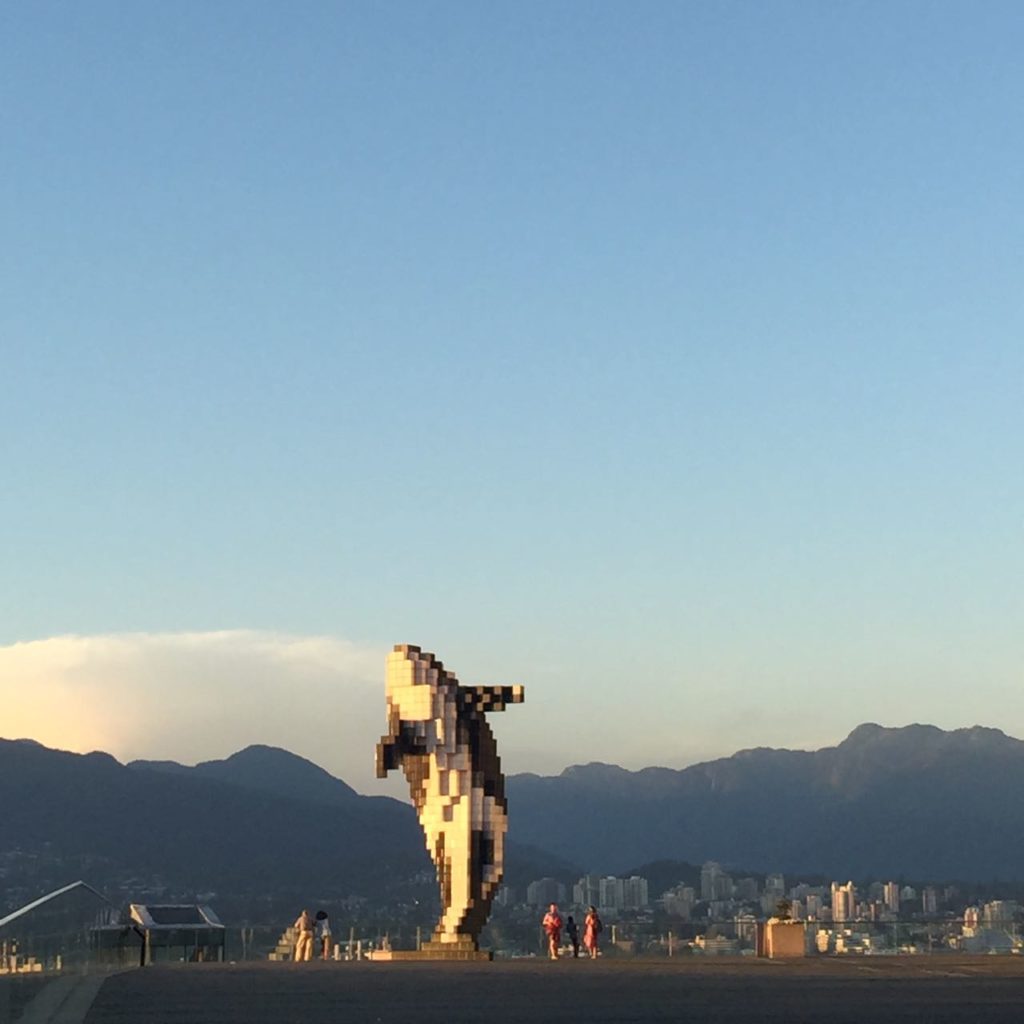
What an atmospheric monastery to visit, Erin! It’s very beautiful. I bet your son loved exploring around here. I know my two would adore a half day here. Thanks for sharing on #FarawayFiles
Yes he did. Though I think the snow was almost as much as a draw as the monastery. 😉 He always enjoys high up arrow slits though.
This looks like a lovely day out. The snow makes it look very magical. I’m always trying to take photos from the arrow slots, but they never turn out as well as your did. #farawayfiles
I think this is the first arrow slit photo that’s worked out! After a little coaxing in Lightroom of course. 😉
Love Lightroom!
I’ve never heard of this monastery but it’s definitely pretty!! I love the medieval walls! They reminds me of Rothenburg ob der Tauber! Will have to check this out! #FarawayFiles
Yes! The walls are just like Rothenburg. Same era for sure.
Such a wonderful monastery. It’s so beautiful and I loved the outbuildings surrounded in snow. Beautiful photos. #farawayfiles
Thank you!
Those walls are very Rothenburgy, aren’t they? Beautiful photos (as always!) of a fascinating place, and some interesting use of verbs too! ;o) Love your work – keep it up! #FarawayFiles
Haha, does that mean something doesn’t make sense? I hope you would tell me! Yes, the walls are very Rothenburg – same era I think.
No, no, it makes perfect sense. I just really like the language that you use. Even if I didn’t, criticism from anyone who uses the word “Rothenburgy” should never be taken too seriously 😀
Haha! Well I’ll say thank you then!
Since I was born in SCHWABISH HALL in 1946 after the war, I long to visit my birthplace
,being the daughter of my displaced Polish parents. I live in Canada , and speak Polish ,but not German. The more I learn the more excited I get about travels there as soon as the world allows !